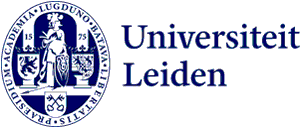Lecture | Language & the Human Past Lecture Series
Models of linguistic diversity and Amazonian pre-history: a view from the Northwest Amazon
- Thiago Costa Chacon (University of Brasília / IEA-Paris)
- Date
- Wednesday 8 June 2022
- Time
- Serie
- Language and the human past
- Address
-
Lipsius
Cleveringaplaats 1
2311 BD Leiden - Room
- 227
Abstract
There are several models that aim to explain how linguistic diversity has been created, shaped and sustained over time. In particular, the Americas, and more specifically the Amazon, figure as one of the outstanding regions where the adpatation and develeopment of new models are utterly required.
By discussing particular features of Amazonian language ecologies, I argue that models of linguistic diversity can be improved if we take into account the concept of inter-ethnic multilingual social networks, which describes a basic set of relations between language and the dyanmics of extra-linguistic dimensions (such as the environment, ethnicity, social and poltical units, trade, intermarriage and gender). This concept also implies that our traditional models of language change and evolution need to incorporate more centrally the role of inter-ethnic relations and language contact, which require alternatives to the taditional “family tree” model. I explore the concept of inter-ethnic multilingual social networks at different scales in time, space and social spheres of interaction in the history of the Upper Rio Negro region in Northwest Amazon. This region has been inhabited since at least 2000 years by populations who speak languages from four linguistic families: Arawakan, Tukanoan, Naduhup and Kakwa-Nukak. Although societies in these areas are in intense contact, it is possible to trace back in time patterns of migrations and of social and cultural organization in a way that reveals a layered and multilateral historical construction of a multi-ethnic and multilingual interaction sphere. While all societies are characterized by patrilineal descent, hierarchy, a Dravidian kinship system and varied forms of social exogamy, there are crucial differences in the specific ways they are politically and economically organized, as well as how distinct language ideologies reflect in systems which focalize more on linguistic exogamy or more on endogamy.
This presentation will explore how the different albeit integrated patterns of social and cultural organization have crucially been reflected in the creation of these multilingual societies as well as in the diversification processes at the micro and macro-levels, as observed by the dynamic formation of distinct ethno-linguistic assemblages and by different patterns of changes in the phonology, the lexicon and the grammar of these languages.
